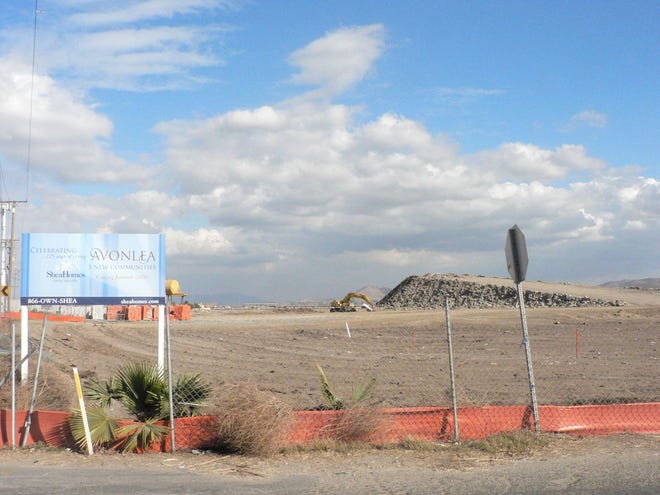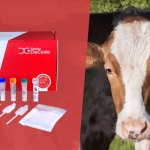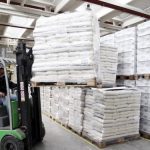
The Gold Rush of the 1850s created an even bigger demand for dairy products, which the farmers were eager to supply.
Urban growth in California
Meanwhile, San Francisco and Los Angeles were growing metropolitan areas and their demand for milk increased, leading to localized dairy farming growth near San Francisco and in the Sacramento Valley. To the south, Los Angeles had a series of concentrated dairy farming areas located southeast of the growing community that existed until the 1950s, when developers paid well for the valued land and the dairy industry.
The dairy farmers in that region, mainly Dutch and Portuguese immigrants, took the money and moved about 40 miles east to the Chino Valley where they built bigger and more modern dairies. Ultimately, some 350 herds with over 300,000 cows made this the most concentrated dairy area in the United States.
With another move in the late 70’s and 80’s, the cycle was repeated: Real estate developers saw the Chino Valley land – then occupied by cows as a logical location for houses, stores and people – and began offering big dollars to the dairy farmers, who were not at all surprised.
In fact, many astute dairy families had seen the change coming and had already purchased much cheaper land in the Central Valley several hours north of the area from Bakersfield to Fresno and in Texas and New Mexico. And, as they had done before in their previous move, the families who sold in Chino for big money got bigger in farm size and cow numbers.
By the early 1990s, cows were being milked at both locations (Chino and Tulare, Kings and Fresno counties) and the milk production reached ever-higher levels. By 1990, the top five US milk producing counties were all in California: Tulare, 200,000 cows; San Bernardino, 186,000 cows; Riverside, 126,000 cows; Stanislaus, 120,000 cows; and Merced, 116,000 cows. Kings, San Joaquin and Fresno counties were under 50,000 cows each, but growing.
California surpasses Wisconsin
In 1990, Wisconsin produced 24.4 billion pounds of milk with California at 20.9 billion pounds, but just three years later California milk production surpassed that of Wisconsin, the nation’s top milk producing state for over a century.
Today, 28 years later, California and Wisconsin still rank #1 and #2 respectively, with California at 40.5 billion pounds and Wisconsin far behind at 30.6 billion.
There were seven states who produced over 10 billion pounds of milk in 2019: California, Wisconsin, Idaho, New York, Texas, Michigan and Pennsylvania. California accounted for nearly 19% of the milk produced in the US in 2019 with Wisconsin trailing at 14%.
Who is the #3 producer?
My thought is that very few people would have a good guess as to what state would be the #3 milk producer after California and Wisconsin. It’s Idaho, which rose from nowhere to surpass longtime leaders New York and Pennsylvania.
I first visited Idaho in the 1970s and learned that the “Magic Valley” area in south central Idaho was a growing dairy area. A US Department of Agriculture official predicted in 1910 that Idaho would become one of the leading dairy states in the nation and that conditions for dairying in southern Idaho were unsurpassed anywhere.
There are about 592,000 milking cows in Idaho, and the state’s 450 dairies collectively produced more 15 billion pounds of milk in 2019. Part of the state’s milk growth can be attributed to the Chobani yogurt manufacturing facility that opened in 2012. Located in Twin Falls, the $450 million plant is the world’s largest yogurt manufacturing facility at 1 million square feet – and it was built in less than 11 months.
A $20 million expansion of the facility has been implemented to serve as its global research and development center. Hamdi Ulukaya, president and CEO of Chobani, describes the region as the “Silicon Valley of food,” pointing to the wide range of food manufacturing plants that have invested in food science since Chobani moved to the state.
Several years ago, Gem State Dairy Products of Twin Falls announced plans to establish one of the largest aseptic milk processing plants in the United States. The new facility was set to break ground in 2019; however, the project is on hold, apparently due to the pandemic.
Longtime #3 milk producer New York has slipped to #4, but still produces over 16 billion pounds per year, and Pennsylvania has slipped to #7 from its longtime #5 position as fast-growing Texas and Michigan moved up the rankings.
No stopping now
So that’s a brief look at where the milk is coming from. For sure, the milk flow continues to increase as herds get bigger and better. No, it’s not a race – and there have long been futile efforts to establish milk quotas or otherwise limit milk production. But, as it has always been, dairy producers will continue to do what they do best: produce milk. Education, technology, innovation, management and ambition will continue to reign.
Of course, dairying, from milking cows to making cheese, will change, but as always, in a forward direction. Bet on that!
John Oncken is the owner of Oncken Communications. He can be reached at 608-837-7406 or email him at jfodairy2@gmail.com.

























